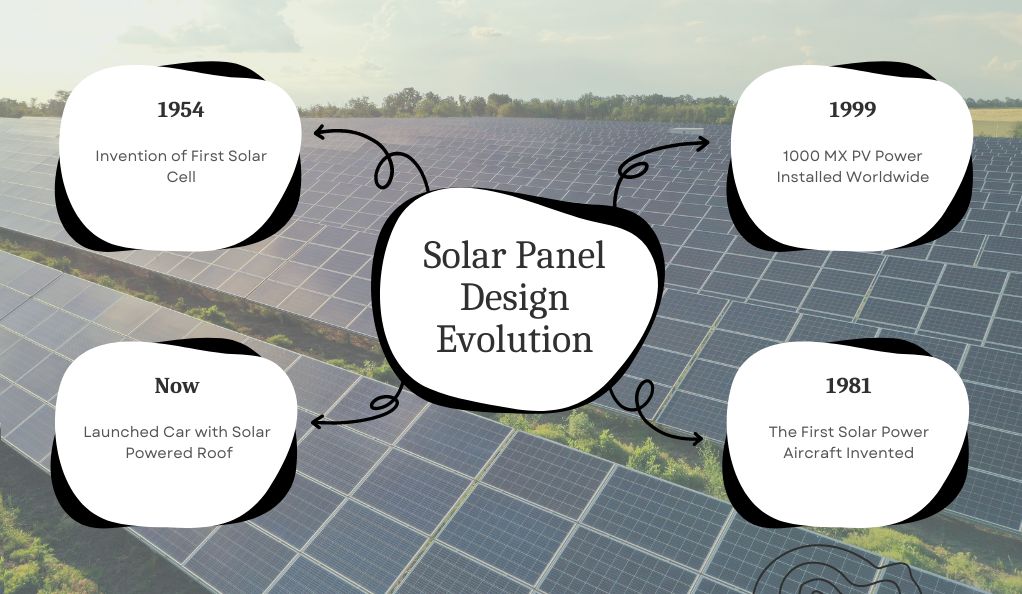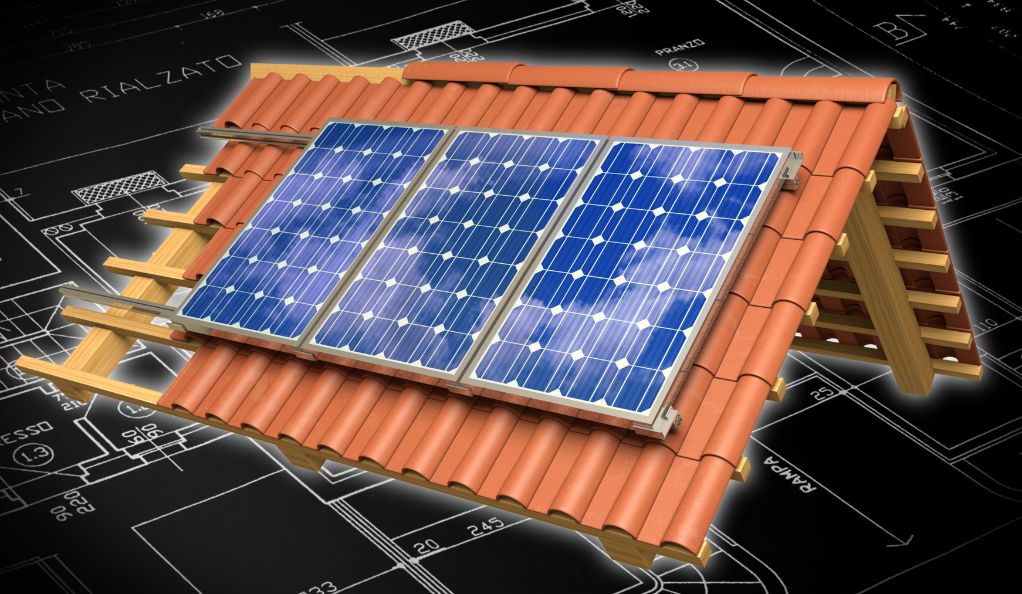Introduction to Solar Aesthetics
The integration of solar panels into home design has evolved from a mere functional necessity to a sophisticated element of modern aesthetics. This transformation reflects a growing consciousness towards renewable energy and a desire to harmonize technology with residential architecture. Solar panels are no longer seen as bulky, industrial components; rather, they have become symbols of sustainable living and contemporary design.
Embracing Solar Energy in Contemporary Architecture
Solar energy, with its vast potential for reducing carbon footprints and promoting sustainable living, is increasingly becoming an integral part of architectural design. This is not only due to its environmental benefits but also due to the growing appreciation for its aesthetic potential. Architects and homeowners are now finding creative ways to integrate solar technology into buildings without compromising on style.
The Evolution of Solar Panel Design
The design of solar panels has undergone significant changes, adapting to the diverse tastes and architectural styles of modern homes. Gone are the days of one-size-fits-all solar solutions. Instead, the market is seeing an influx of customized options, ranging from sleek, frameless designs to solar roof tiles that blend seamlessly with traditional roofing materials.
The transition from the conspicuous, rectangular panels to more aesthetically pleasing options has been pivotal in the adoption of solar technology in residential areas. Notably, the shift towards building-integrated photovoltaics (BIPV) represents a major step forward. BIPV systems are not just solar panels added to roofs; they are integral parts of the building envelope, serving as roof tiles, façade elements, or even glazing materials. This approach not only provides energy but also contributes to the building’s aesthetic appeal.
The Importance of Solar Panels in Modern Home Design
Integrating solar panels into home design is not just about energy efficiency; it’s about making a statement on sustainability and modern living. Homeowners are increasingly looking at solar panels as a way to enhance the architectural appeal of their homes. This involves careful consideration of the panel design, placement, and integration with the existing architectural elements.
Solar Panel Design Evolution

The evolution of solar panel design is a testament to the merging of function and form in modern architecture. The transition from traditional, bulky panels to sleek, aesthetically pleasing designs has played a pivotal role in their acceptance and integration into residential settings. This section delves into the innovative designs that have revolutionized the appearance of solar panels, making them not just energy-efficient solutions but also stylish additions to homes.
From Clunky to Sleek: A Design Transformation
The early days of solar panels were marked by their functional, utilitarian appearance. These panels were often large, cumbersome, and noticeably distinct from the architectural elements of homes. However, as technology advanced, so did the design of solar panels. The focus shifted towards creating panels that were not only efficient but also visually appealing. This led to the development of sleeker, more streamlined designs that could easily blend with various architectural styles.
Frameless Solar Panels: Minimalism at Its Best
One significant advancement in solar panel design is the introduction of frameless panels. These panels offer a minimalist, clean look that integrates seamlessly with the roof, eliminating the bulky framing typical of traditional panels. The absence of a frame reduces visual clutter, making these panels a preferred choice for homeowners seeking a modern, unobtrusive look.
Colored and Patterned Solar Panels: Harmonizing with Home Aesthetics
Another leap in solar panel design is the development of colored and patterned panels. These panels are tailored to complement the color scheme of the roof or the exterior of the house. By matching the roof’s color or pattern, these solar panels become an integrated part of the home’s aesthetic, rather than an afterthought.
Solar Roof Tiles: The Ultimate in Seamless Integration
Solar roof tiles represent the pinnacle of blending functionality with aesthetics in solar design. Unlike traditional solar panels that are mounted on top of the roof, solar roof tiles replace conventional roofing materials. These tiles are designed to look like regular roof tiles while harnessing solar energy. Their ability to blend in perfectly with the existing roofline makes them an ideal solution for homeowners who prioritize aesthetic appeal without compromising on energy generation.
BIPV (Building Integrated Photovoltaics): A Design-Centric Approach
Building Integrated Photovoltaics (BIPV) takes the concept of solar aesthetics a step further by incorporating photovoltaic materials directly into building elements such as windows, facades, and walls. This approach allows for creative and diverse architectural expressions, turning entire building surfaces into energy-generating elements. BIPV systems offer a sophisticated and futuristic appeal, showcasing how renewable energy technology can be harmoniously integrated into building design.
Customizing Solar Installations for Your Home
In the realm of solar energy, customization plays a crucial role in achieving a harmonious balance between functionality and aesthetics. The ability to tailor solar installations to individual homes allows for a more integrated and visually appealing approach. This section explores various customization options available for solar panels, emphasizing how they can be adapted to complement and enhance home aesthetics.
Tailoring Solar Solutions to Architectural Styles
Each home has a unique architectural style, and solar installations should complement this. Customizing solar panels involves considering the home’s design, color scheme, and roof layout. Here are some key aspects of customization:
- Panel Size and Shape: Solar panels come in various sizes and shapes, enabling them to fit different roof types and sizes seamlessly.
- Color Customization: Solar panels no longer just come in standard black or blue. Homeowners can choose colors that blend with their roof’s color scheme, allowing for a more integrated appearance.
- Frame and Trim Options: Frames and trims can be selected to match the architectural details of the house, adding to the aesthetic appeal.
Professional Installation: Key to Visual Appeal
The way solar panels are installed can significantly impact their aesthetic appeal. Professional installation ensures not only the safety and efficiency of the solar system but also its visual integration. Expert installers consider factors like symmetry, alignment, and positioning to maintain the home’s aesthetic integrity.
- Symmetrical Layout: A symmetrical arrangement of solar panels can enhance the roof’s visual appeal, making the installation appear more deliberate and well-planned.
- Seamless Integration: Professionals can ensure that the panels integrate smoothly with existing roof lines and architectural elements, avoiding an awkward or forced appearance.
Impact of Customization on Energy Efficiency
While customization focuses on aesthetics, it’s crucial to note that it also impacts energy efficiency.
- Orientation and Angle: Customizing the placement and angle of solar panels for optimal sun exposure maximizes energy production.
- Panel Type: Different types of solar panels have varying efficiency rates. Choosing the right type for your specific needs and location is crucial.
Solar Roof Tiles: Elegance Meets Efficiency
In the pursuit of integrating solar power with home aesthetics, solar roof tiles have emerged as a revolutionary solution. These tiles represent a significant advancement in solar technology, combining the practicality of energy generation with the elegance of modern roof design.
The Aesthetics of Solar Roof Tiles
Solar roof tiles are designed to look like traditional roofing materials, such as slate or terracotta, and are integrated directly into the roofing structure. This design allows them to blend in seamlessly with the existing roof, making them virtually indistinguishable from regular tiles.
Visual Harmony: Unlike traditional solar panels, which are mounted on top of the roof, solar roof tiles maintain the line and form of the original roof, preserving the architectural integrity of the home.
Durability and Performance
Solar roof tiles are not only about aesthetics; they are also designed to be durable and efficient. They need to withstand various weather conditions while efficiently converting sunlight into electricity.
- Weather Resistance: These tiles are built to endure harsh weather conditions, ensuring longevity and consistent performance.
- Energy Efficiency: Solar roof tiles have evolved to be as efficient as traditional solar panels, effectively harnessing solar energy to power homes.
Installation Considerations
Installing solar roof tiles is more complex than traditional solar panels. It involves replacing part or all of the existing roofing material, which requires careful planning and skilled installation.
- Roof Suitability: Not all roofs are suitable for solar tile installation. The roof’s age, structure, and angle must be considered.
- Professional Installation: Due to their complexity, solar roof tiles should be installed by professionals with experience in both roofing and solar technology.
Cost and Return on Investment
While solar roof tiles offer aesthetic and environmental benefits, they are often more expensive than traditional solar panels. However, this cost needs to be weighed against the long-term energy savings and the increase in property value they can provide.
Initial Investment: Higher than traditional solar panels due to the materials and complexity of installation.
Long-term Savings: Reduction in energy bills and potential increase in home value.
Creative Solar Integrations: Beyond the Roof

The evolution of solar technology has expanded its application beyond traditional rooftop installations, allowing homeowners to creatively integrate solar energy into various aspects of their homes. This section highlights innovative and aesthetically pleasing ways to incorporate solar power into home design.
Solar Balconies: Dual-Purpose Spaces
Solar balconies offer an innovative solution for urban homes with limited space. They integrate solar panels into the balcony’s structure, such as railings or flooring, turning these areas into energy-generating spots without compromising their utility or aesthetic appeal.
Building-Integrated Photovoltaics (BIPV)
BIPV technology seamlessly blends photovoltaic materials into building elements like windows, walls, and facades. This integration not only generates energy but also enhances the building’s architectural appeal with a modern, high-tech look.
Solar-Powered Water Features
Garden water features like fountains and ponds can be equipped with solar-powered pumps and lights, adding a sustainable and serene touch to landscaping while maintaining natural aesthetics.
Solar-Enhanced Outdoor Living Spaces
Outdoor areas such as pergolas and patios can be transformed with solar panels, providing energy generation while offering shade and enhancing the overall design of the space.
The Intersection of Solar Technology and Smart Homes
The integration of solar panels with smart home technology marks a significant advancement in home energy management. This section explores how this integration enhances energy efficiency and offers homeowners greater control over their energy usage.
Smart Inverters: Central to Integration
Smart inverters are key in connecting solar panels to smart home systems. They not only convert solar power for home use but also provide real-time energy production and usage data, essential for efficient energy management.
- Energy Output Adjustment: These inverters adapt energy output to match consumption needs, optimizing solar panel efficiency.
- Energy Monitoring: Homeowners can monitor energy usage and production, allowing for informed energy management decisions.
Home Automation Synchronization
Solar panels can seamlessly integrate with home automation systems, allowing for the synchronization of energy consumption with solar power availability. This synchronization ensures that key appliances such as HVAC and lighting systems make the most efficient use of solar energy.
Enhanced Energy Storage
- Uninterrupted Power Supply: Stored solar energy ensures a continuous power supply, crucial during outages or low solar production times.
- Cost Savings: Using stored solar energy during high-tariff periods can lead to significant savings on electricity bills.
Role of AI and Machine Learning
AI and ML technologies optimize solar energy usage by analyzing consumption patterns and making predictive adjustments for improved efficiency.
- Predictive Energy Management: AI algorithms predict energy needs and adjust distribution for maximum efficiency and savings.
Conclusion
Solar panels’ integration into home aesthetics has reached a remarkable milestone, seamlessly merging functionality and style. From sleek solar roof tiles to innovative building-integrated photovoltaics, these solutions not only promote sustainability but also enhance home design. This synergy with smart home technology optimizes energy efficiency and user convenience, shaping a new paradigm in home energy management for a greener, more elegant future.
